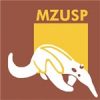The adult Coleoptera collection comprises about one million specimens assembled and identified at least at family level. It has representatives of the 111 families that occur in Brazil and most of those that occur in the world. It is formed mainly by Neotropical species, more specifically from Brazil. It includes about 2,300 primary types (1,132 of them from Cerambycidae), 1300 of which are computerized. Besides the assembled material, it also has a large amount of material to be processed.
Entomology
Coleoptera
History
The collection of the Museu de Zoologia da Universidade de São Paulo (MZUSP) had its beginning in Imperial Brazil when commissions were designated to perform systematic studies of natural resources. The first was the Geological Commission of the Empire of Brazil (1875-1878), led by Canadian geologist Charles Frederick Hartt, who five years earlier had participated in the first Morgan expedition in the Amazon. Following the model of the Geological Commission of the Empire, in 1886 the Geographical and Geological Commission of São Paulo’s Province (CGG) was created, with the purpose of constituting an interdisciplinary group to plan and execute research and subsidize the occupation of the state of São Paulo’s territory. The CGG was annexed to the “Museu do Estado ” in 1893, where in the same year the Zoology section was created. The German Hermann von Ihering was the Museum’s director. This Museum, including the Zoology section, was installed at Ipiranga in 1894 and called Museu Paulista (MP). At that time, it was no longer connected to CGG. Initially, the MP was formed basically by the donations of the Councilor Francisco de Paula Mayrink (1839-1906), who bought the collection from “Museu Sertório”. In 1895, the MP assumed the profile of Natural History Museum. Its first director was the American geologist Orville Adalbert Derby, who had followed Hartt on the second Morgan expedition in 1871. Several entomologists have worked at the MP: Adolph Hempel (1870-1949), Curt Schrottky (1874-1937), Rodolpho von Ihering (1883-1939), José Pinto da Fonseca (1896-1982), and Hermann Luederwaldt (1865-1934). Luederwaldt started the activity of sending material abroad, to be identified by experts, such as beetles to E. Gounelle (France) and Diptera to G. Enderlein (Germany).
With the changes in the MP, in 1939 the Zoology section was transferred to the Department of Zoology of the State of São Paulo’s Office of Agriculture. Since then, Coleoptera’s collection has increased expressively with a great amount of material collected especially by A. Hempel, E. Garbe, O. Dreher, W. Ehrhandt, H. von Ihering, H. Luederwaldt, and by the donation of small collections, such as e.g., E. Gounelle (general Coleoptera), F. Ohaus (Scarabaeidae: Rutelinae), O. Staudinger (Scarabaeidae), C. Schrottky (coprophagous Coleoptera), and M. Régimbart (aquatic Coleoptera).
In 1969 the Department of Zoology was incorporated into the Universidade de São Paulo and named Museu de Zoologia. Since then, several collections have been acquired, such as B. Malkin (specimens from the Amazon and Suriname), C. Elias (specimens from southern Bahia and Espírito Santo), Melzer (Cerambycidae), Borgmeir (Staphylinidae mirmecophiles), Halik (southern Brazil), and Bokermann (Chrysomelidae: Chlamisinae). The number of specimens increased considerably with the acquisition of the Richard von Diringshofen collection, which incorporated other small and particularly important collections such as: J. Guérin (Erotylidae, part), G.H. Nick (Carabidae), J. Bechyné (Chrysomelidae, part), and specimens from the B Pohl and F. Plaumann collections. The Diringshofen collection contains a large number of specimens from the Amazon region and an important collection from the city of São Paulo, in biotypes that have already disappeared. The part of this material that was assembled (61,000 specimens), was also identified by experts as: J. Bechyné (Chrysomelidae: Alticinae, Eumolpinae, Galerucinae), Erich Uhmann (Chrysomelidae: Hispinae), Fransz Spaeth (Chrysomelidae: Cassidinae), Max Liebke e S. L. Straneo (Carabidae), J. Kulzer (Tenebrionidae), Karl E. Schedl (Curculionidae: Platypodinae, Scolytinae), G. Frey (Scarabaeidae: Melolonthinae), J. Guérin (Erotylidae e Chrysomelidae: Megalopodinae), F. S. Pereira (Scarabaeidae e Passalidae), B. A. M. Soares (Brentidae), and F. Lane, J. Melzer, and U. R. M. Souza (Cerambycidae).
Larvae collection
The collection of immature Coleoptera from MZUSP was initiated in 1966 with the collections of Dr. Cleide Costa. Since 1977, with the collaboration of Prof. Sergio A. Vanin, a long-term project was elaborated to collect and create immature coleopters in a laboratory and to set up a larvae breeding laboratory. In the following years it was possible to add the collaboration mainly of Sonia Casari and Sergio Ide. With the material in this collection, it was possible to publish numerous articles and two books, Costa et al. 1988 and Costa et al. 2006.
Currently, it gathers about 40,000 specimens, being 18,000 adults, 19,000 larvae and 3,200 pupae belonging to about 90 families. It is unique among its worldwide counterparts because it includes material exclusively created in the laboratory. The specimens are separated in glass jars, and each sample is packed in plastic jars of various sizes and preserved in 70% alcohol. Most of the adults are housed next to the corresponding immature ones, raised in the laboratory; a small part is pinned and kept dry in a separate cabinet, but next to the corresponding immature ones. It is formed mainly by Neotropical species from Brazil, from the following states: Pará, Distrito Federal, Mato Grosso, Mato Grosso do Sul, Goiás, Minas Gerais, Rio de Janeiro, São Paulo, Paraná, and Rio Grande do Sul.
Since 1992, the optimization of the immature collection’s use was done through the addition of a database with the help of the “Access for Windows” application that allows the incorporation of already generated information. In 2016, this database was transferred to Specify and at the moment the entire collection is computerized.
Faculty Curators
Systematics and Biology of Coleoptera, with emphasis on Elateridae; Coleoptera Larvae
Prof. Dr. Sônia Aparecida Casari
Phone: (55) (11) 2065-8123
Senior Researchers
Systematics and Evolution of Curculionoidea
Prof. Dr. Sérgio Antonio Vanin (Associate Researcher – IB/USP)
Phone: (55) (11) 2065-8115
Systematics, Evolution, and Coleoptera Bionomy – Insect Metamorphosis
Prof. Dr. Cleide Costa
Phone: (55) (11) 2065-8124
Technical Support
Last Visitors
